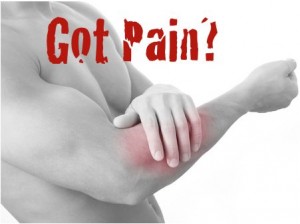Forearm is the region that exists between the wrist and elbow and is made of two major bones called as ulna and radius. Several joints are found between these two long bones. These joints are responsible for giving flexibility to the forearm for performing many actions including straightening and bending. Plenty of ligaments and joints in this region give more support and strength to the forearm.
Apart from the joints and ligaments there are several muscles and tendons in the forearm. Only because of these muscles/tendons flexible movements are possible. There are several muscles like flexors, extensors, pronators and supinators that are responsible for making flexible movements. There are also group of nerves like ulnar nerve, median nerve and radial nerve in this area.
Forearm Pain Causes
Since the forearm is composed of many complicated nerve endings, blood vessels, muscles and joints, any damage or injury to them can cause forearm pain.
-
Injury
Any trauma or injury to the underlying bones, tendons, muscles and joints can cause forearm pain. Forearm is one of the most active parts in the body and hence it is vulnerable to injury and pain. Any serious blow or falls can damage the ulnar and radius muscles.
Any kind of twisting of forearm beyond its capacity can also cause injury. It is the forearm that comes for first line defense when someone attacks you suddenly with sharp weapon. Fracture of bones (ulnar or radius) and sometimes cracks on the bones can occur during accidents or fall.
-
More Usage
Using the forearm in excess can build pressure inside causing forearm pain. It may affect the muscles or joints or even both depending on the stress caused. Tensynovitis is one of the common conditions that cause swelling of tendon sheath. Medial epicondylitis is a condition causing inflammation of epicondyle region of the forearm. Similarly excess of strain can affect the tennis elbow leading to swelling of tendons inside.
-
Arthritis
Arthritis is a condition of inflammation of joints in any part of the body and it can occur with forearm also. Cartilages can slowly get eroded due to arthritis making the inner bones and joints more vulnerable. Rheumatoid arthritis, osteoarthritis and septic arthritis are some types of arthritis affecting the forearm causing moderate to severe pain.
-
Nerve Disorder
Cervical spine nerves can be put under excess of pressure and strain leading to cervical neuropathy causing forearm pain. This condition is known as pinched nerve which can affect the hands, forearm and even fingers. Forearm pain can occur if the C5, C6 or C7 are affected. Carpal tunnel syndrome can badly affect the wrist and fingers and can cause forearm pain also.
